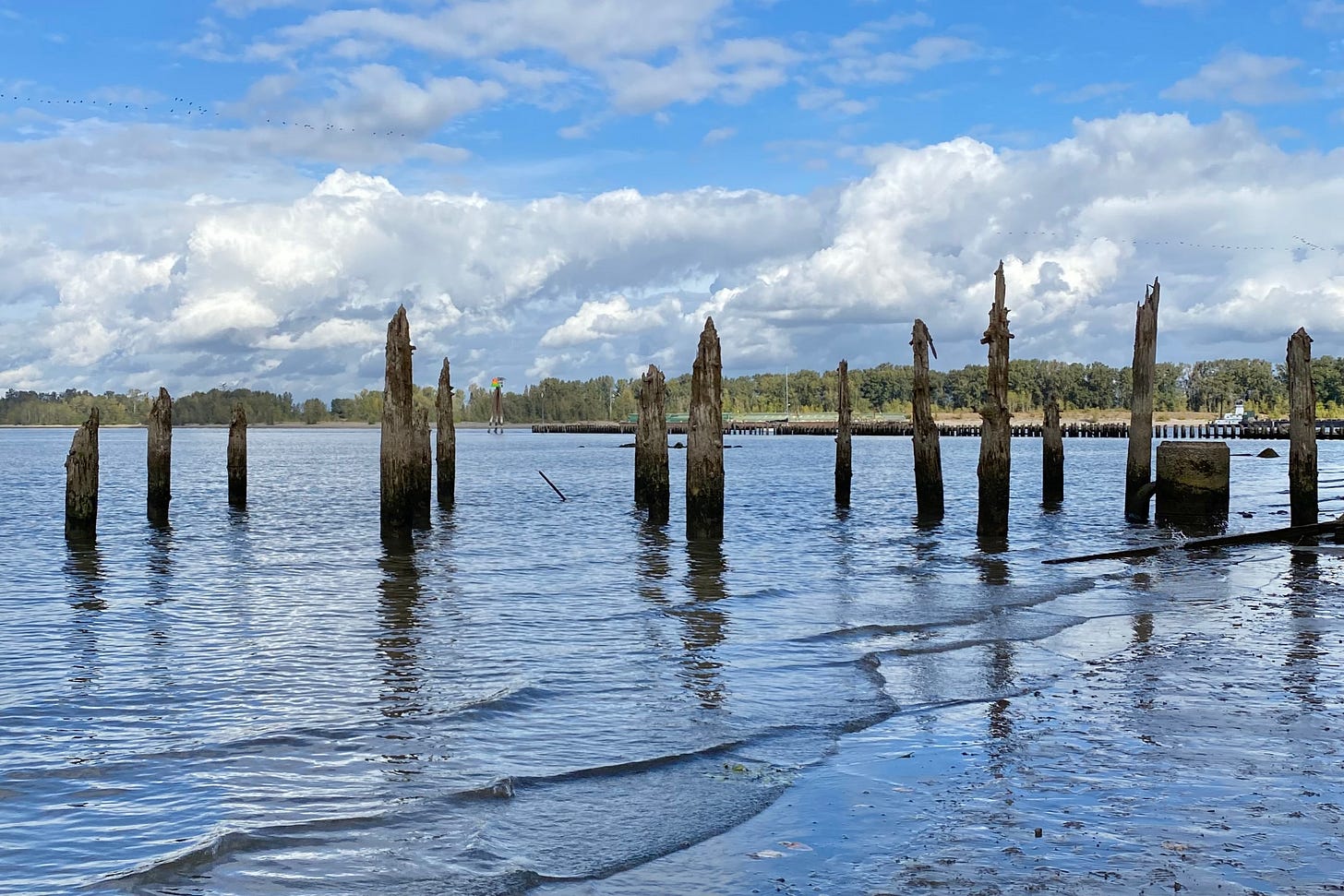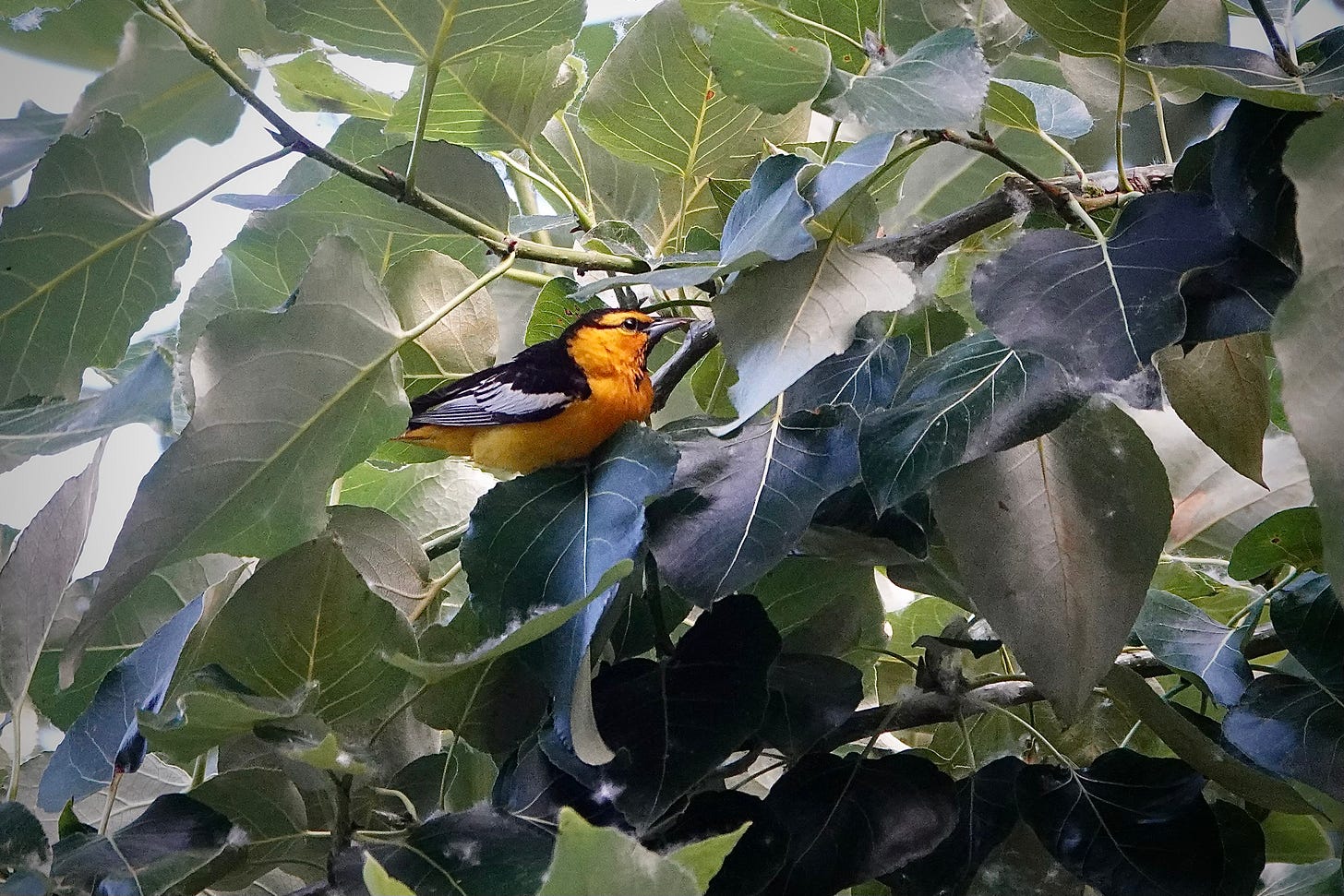Kelley Point
ASMR at the Confluence
Creators are told you have just a couple seconds to hook your audience. I guess I’m more the catch-and-release type. The first seconds of my soundwalks often feature the sound of footsteps. It should come as no surprise; it is a soundwalk after all. It might be a set-up for a narrative arc, but hardly a hook. Kelley Point Soundwalk, out today, is the most quiet of this batch, and perhaps a love it or hate it proposition. The recording is hyper-focused on the lapping water of the Willamette and Columbia Rivers on a nearly windless day. It’s riparian ASMR—you know, that whole niche video genre of people whispering that seems to inspire tingles in some and guffaws in others? I recorded this soundwalk dangling a stereo microphone like a fishing lure from a four foot stick, just inches above the water. It captures all the slaps, slurks, sploinks, and splashes of the shoreline. It captures my footsteps too. It’s a lot to take in at first.
You’re invited to listen to the excerpt and read on. This one is especially well suited for headphones if you got ‘em.
The instrumentation on Kelley Point Soundwalk is pretty spartan. Piano, harp, and celeste passages play out loosely, like the water. Occasional string arrangements add some gravitas. The melody just kind of builds in an iterative way. There’s some long, wobbly synth drones. It’s all very reflective. So let’s reflect.
A Brief History of Kelley Point and the Real Columbia Lowlands
In my last post I remarked that I invented the title Columbia Lowlands for my previous album because I thought it sounded better than Vancouver Lake Lowlands. (It also didn’t poll well with the family. Nor did Shilapoo, I might add.) Well, not a day passed before I discovered that I invented no such thing. Though it doesn’t come up in a google search, “Columbia Lowlands” was what most Portlanders called the mixed floodplain forest and wetland habitat north of the St. Johns and Portsmouth neighborhoods in Portland from the mid-1800s all the way up until the early 1960s. Columbia Slough, which runs roughly parallel to the Columbia River about a mile south, demarcated the border with Portland city limits in that era. The Willamette River provided the west boundary, and the city of Vanport, which sprung up in 1942 to house workers in the shipyards, was once the eastern boundary. The Columbia Lowlands boasted three expansive lakes totaling over 3000 acres in size: Smith, Bybee and former Ramsey Lake.


All told, almost 5000 acres of habitat played host to rich web of wildlife a literal stone’s throw from the city, as remembered by Tom MacAllister and David B. Marshall in Wild in the City:
If there was one wildest spot for us in that interlude [the early 1940’s] it was the Columbia lowlands… Lakes, sloughs, seasonal ponds, Oregon ash and black cottonwood forest, sedge meadows, willow and red-osier thickets intertwined and confused a sense of direction.
After ditching the bikes, we hiked and waded through a holdover of what the naturalist John Kirk Townsend experienced while collecting out of Fort Vancouver in the 1830’s. Western painted turtles lined floater logs to absorb the solar heat. A blue heron rookery that filled the cottonwoods was a cacophony of clacking, clicking, and squaking. We called it the “heron factory”. Deer, raccoon, mink, otter, and beaver left fine track impressions along silty margins. Wood Duck pairs squealed and twisted upwards through the hardwoods. Green Heron crouched in the bank shadows.
Bullock’s Orioles brought a splash of tropical color to the green mansions. We focused on a new bird song of rising and falling phrases, as if in conversation, and got our first Red-eyed Vireo.
Bill recorded one of the last Yellow-billed Cuckoos in the area.
Kelley Point Park, at the convergence of The Willamette and Columbia Rivers is now a marooned 100 acre remnant of that original sprawling riparian habitat, patching together former island landforms with dredge spoils.


The Willamette River Light Station, a curious victorian-styled octagonal home atop numerous pilings, once stood sentinel at Kelley Point from 1895 to 1935. Navigational lights in those days required on-site keepers. The original light was a small oil lantern, rated at 20 candlepower.
The light station also had a 1200 lb. bell for a fog signal, sounding every 10 seconds with a clockworks-style striking mechanism. According to the coast guard the “light and fog signal were moved to a low piling near the Kelly Point beach.” Does that original bell still ring out? I doubt it, but perhaps I’ll head up there on some foggy day to see if I can make a recording!
You can still see some of the lighthouse pilings in the river today.
Kelley Point Park boasts about a mile of sand beach riverfront where one can watch cargo ships, and barges drift by. The black cottonwood forest that covers most of the park’s interior hosts Bewick’s Wrens, Pileated Woodpeckers, migratory warblers, and if you’re lucky, you can still spot the showy Bullock’s Oriole in spring.







